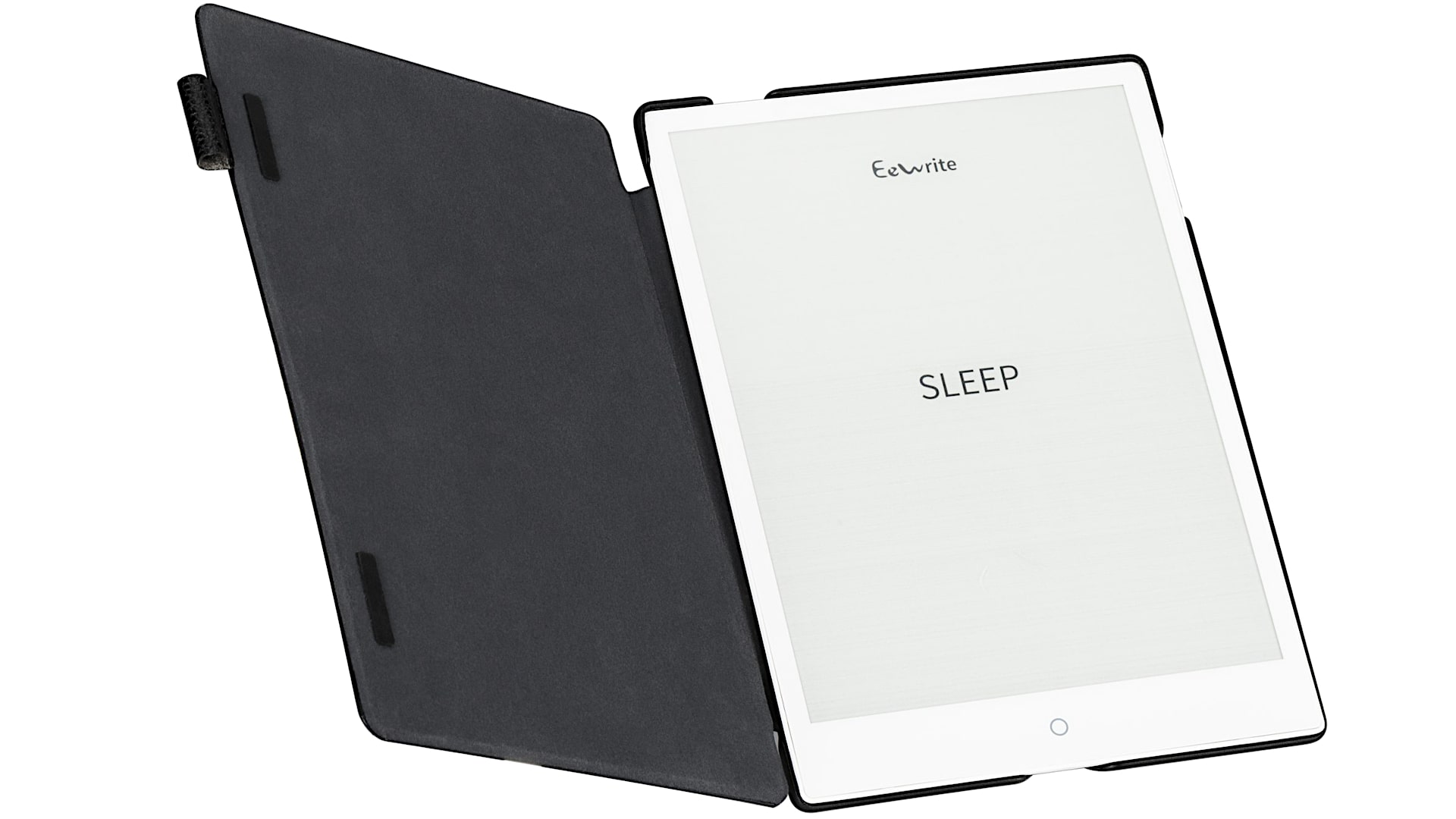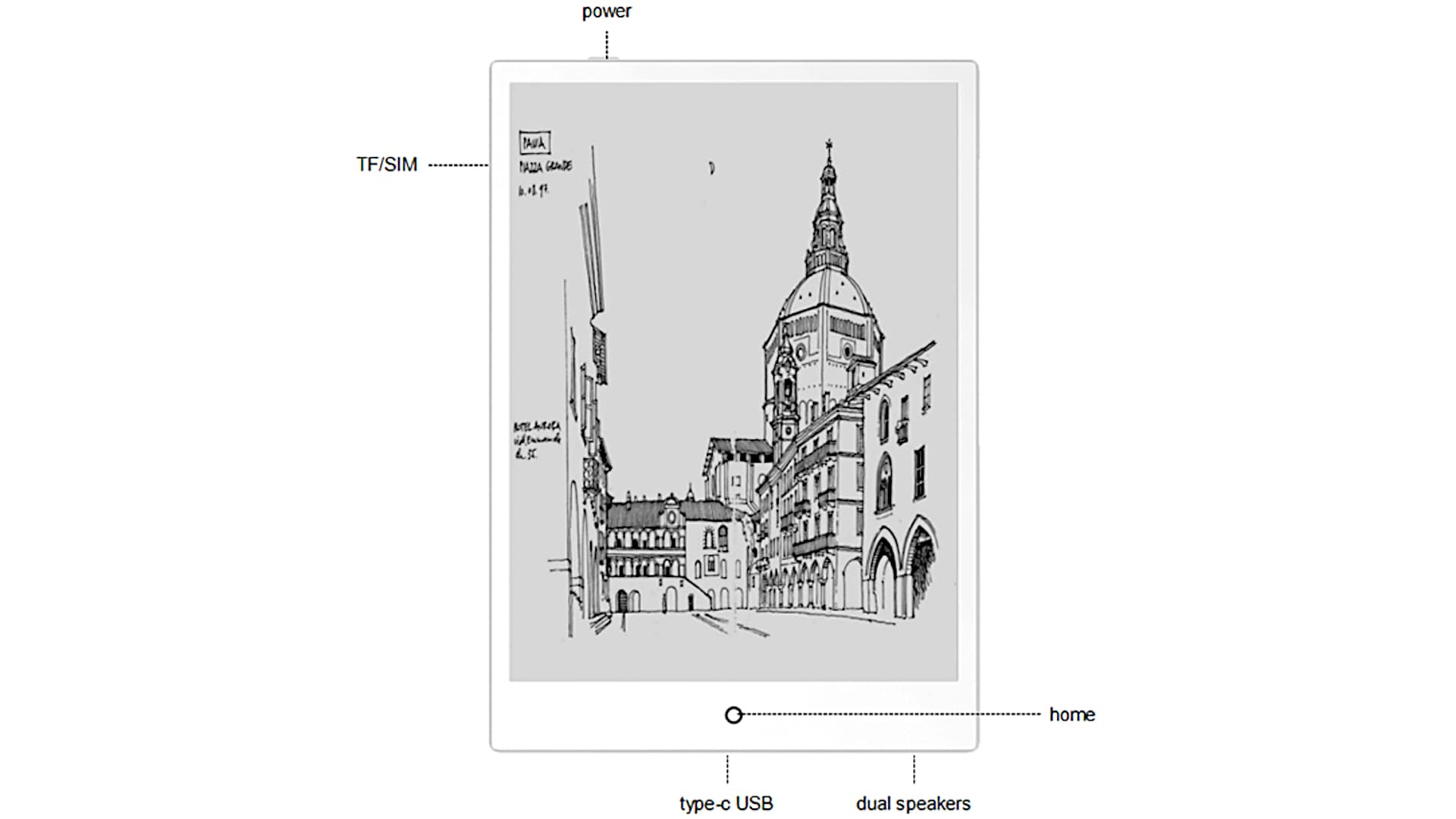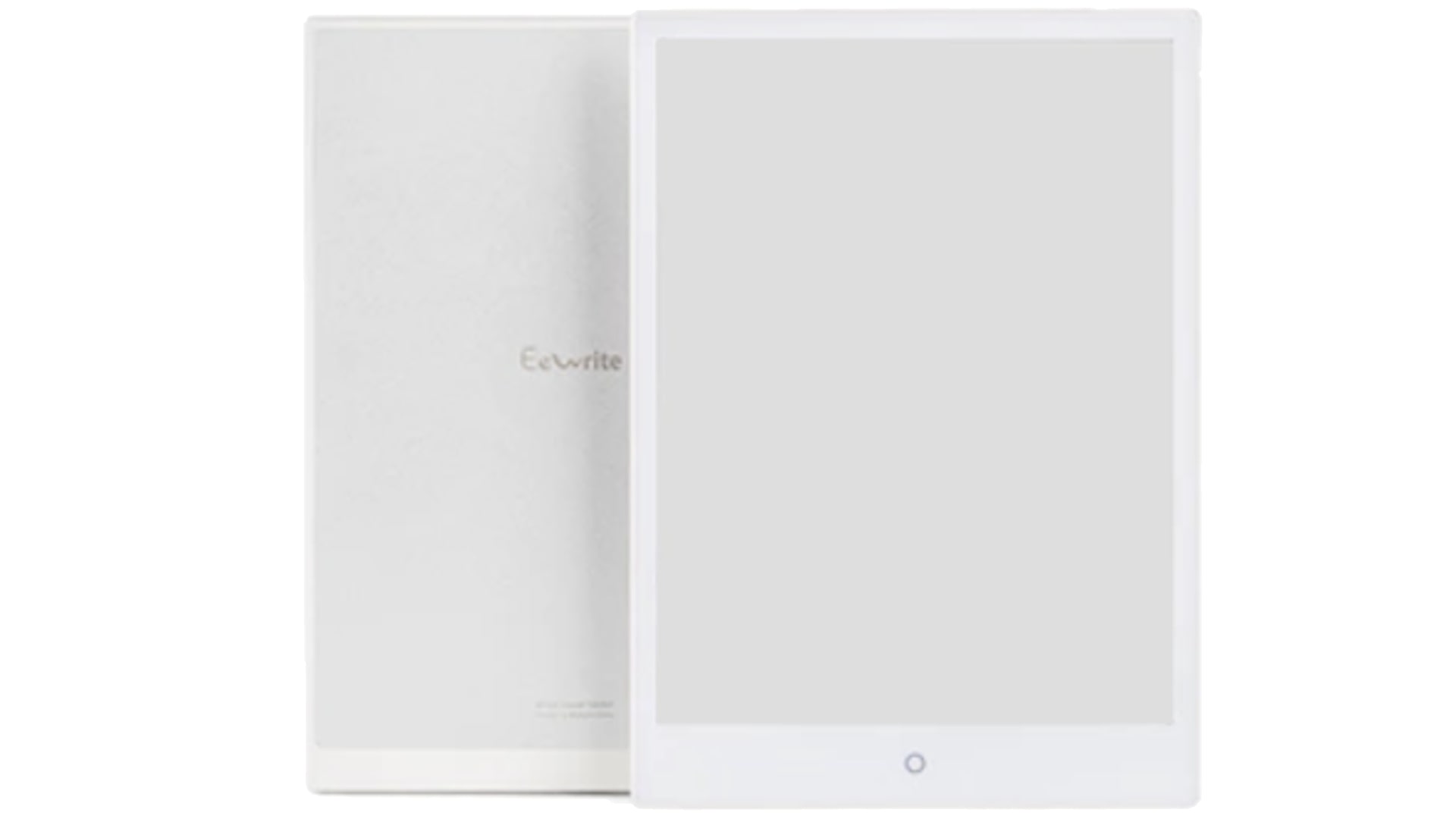In this article, I give you my Wisky EeWrite E-Pad review with specs included. EeWrite is actually a new company name for a company that has existed in China for some time since 2005 – Wisky, minus the H that you would have in the whisky drink.
This company makes LCDs for tech products, that sort of thing, and they work with Microsoft and some big OEMs. I think they’re legit.

This E-Pad is on Kickstarter. I don’t cover Kickstarter stuff that often. More often, Kickstarter is being used to generate enthusiasm for products these days, and not really because they need funding.
For this one, their goal was only $10,000 which they achieved easily on the first day. They’re up to more than three hundred thousand dollars and it’s going to run until the end of April.
This is an e-ink Android-based reader. It’s a ten-point-three-inch display and with access to full Android which you don’t usually see. Most of the time it’s a proprietary kind of overlay on top of Android, you don’t always have access to the full system, etc.

E-Pad has 4G LTE with a nano-SIM card slot, it has a Wacom EMR battery-free pen, really good pressure curves, and all that sort of thing. It’s really pretty neat stuff.
The Wisky EeWrite E-Pad boasts a Mobius Carta Inc display, renowned for its quality. One notable feature of this display is its refresh rate, which may occasionally leave faint remnants of previous letters or images on the screen. However, users can easily address this issue by tapping the paintbrush icon located on the top bar to refresh the screen as needed. With a resolution equivalent to that of the Boox Note Pro, the E-Pad offers a sharp display with a pixel density of 227 PPI. Moreover, its flat, matte surface eliminates glare, making it ideal for extended reading sessions, whether it be books, graphic novels, or manga.

While the E-Pad excels as an e-reader, its performance may feel lacking for those accustomed to the smooth transitions of traditional LCD displays. Due to the inherent limitations of e-ink technology, the screen refresh rate is notably slower, making it less suitable as a direct replacement for an Android tablet.
Nevertheless, users have access to four tabs on the home screen, facilitating seamless navigation between the e-reading application, notes application, settings, and the Android launcher. Furthermore, the device supports access to Google Play, allowing users to download additional applications, although its primary focus remains on reading and note-taking.
Equipped with a Wacom EMR pen boasting 4096 pressure levels, the E-Pad offers precise and responsive input for note-taking and sketching. The battery-free pen ensures excellent palm rejection, enhancing the overall writing and drawing experience. While the built-in notes program offers a satisfactory range of features, third-party applications such as Medibang Paint and Autodesk Sketchbook may experience some lag or delay, particularly during intensive tasks. However, users have the flexibility to use alternative pens, including those designed for tablet PCs or Samsung S Pens, further expanding the device’s versatility.
Under the hood, the E-Pad is powered by a MediaTek Helio X20 CPU, featuring a 10-core architecture. While this CPU falls short of flagship models like the Samsung Galaxy S10 Plus, it offers more than sufficient performance for e-reading and basic sketching tasks. Despite some performance limitations, particularly evident when running third-party applications, the E-Pad demonstrates potential as a capable e-reader and sketching device. As the device continues to evolve, improvements in software optimization and third-party app compatibility are expected, further enhancing its overall usability and appeal to users.
At present, the Wisky EeWrite E-Pad offers limited support for file formats and lacks the ability for inking directly on e-books, a feature that many users would find beneficial. While Adobe Acrobat Pro can be utilized for inking on PDFs, Amazon’s Kindle program functions seamlessly on the device. However, the absence of inking functionality on e-books is a notable drawback that users hope will be addressed in future updates. Additionally, the page turn speed on the E-Pad is not as swift as that of a Kindle, though this may be attributed to the device’s larger 10.3-inch screen, which accommodates more text per page.
The E-Pad is expected to ship with Android 8.0 Oreo, which, while not the latest version, is still a significant improvement over older models such as the Boox, which runs on Android 6.0. However, the current version available for review is Android 7.1.1, indicating that the device is still in the prototype stage and not yet the final release product. An interesting quirk of the E-Pad is its limitation to portrait orientation only, lacking the ability to switch to landscape orientation for tasks such as viewing two facing pages or sketching in landscape mode. This limitation may pose an inconvenience for users accustomed to more versatile orientation options.
In terms of pricing, the E-Pad is available for pre-order on Kickstarter starting at $449 for the base unit, featuring 2GB of RAM and 32GB of storage. There is also an option with 4GB of RAM and 64GB of storage available for a higher price. Additionally, the pen accessory, which is essential for note-taking and sketching, is priced at $30.
While the final prototype is expected to include front lighting, currently, there are two versions available, with and without front lighting. The anticipated retail price of $699 may seem steep compared to competitors such as Boox and Sony e-readers, which start at around $599. However, the company reassures potential buyers that pricing is subject to change, hinting at the possibility of a price reduction in the future.
One standout feature of the E-Pad is its inclusion of 4G LTE connectivity with a nano-SIM card slot, allowing users to access cellular networks for internet connectivity. The device supports a wide range of LTE bands, including those commonly used in the US, making it compatible with carriers such as AT&T, T-Mobile, and even Verizon. However, while this feature holds promise, the software integration with 4G LTE functionality is still in progress, as the current version of Android may not fully support it. Issues such as outdated APN lists need to be addressed before the feature can be fully utilized.
Another notable aspect of the E-Pad is its inclusion of speakers, a rarity among e-readers. While the speakers lack bass and may not offer the highest audio quality, their presence provides users with the option of audio playback without the need for external speakers or headphones. However, it’s worth noting that the device lacks a headphone jack and physical volume controls, requiring users to adjust volume settings through the software interface. Additionally, headphones can be connected via the USB-C port, which also supports USB on-the-go functionality, offering added flexibility for audio connectivity.
The Wisky EeWrite E-Pad offers versatility in terms of connectivity options, allowing users to connect a variety of peripherals such as flash drives or USB-C headphones. Additionally, compatibility with USB-C to 3.5mm headphone adapters further enhances the device’s audio capabilities, catering to users who enjoy listening to music while reading.
Battery life is a crucial factor for any portable device, and the E-Pad boasts a substantial 4,100 milliamp battery, ensuring extended usage without frequent recharging. While the exact battery life may vary depending on usage patterns, typical e-ink devices tend to offer weeks of battery life rather than hours, making them ideal for prolonged reading sessions. Although the prototype version’s battery performance has yet to be assessed, it is reasonable to expect at least a week of usage on a single charge with moderate use, surpassing the battery life of conventional Android smartphones. For comparison, basic Kindle Paperwhite devices can last up to two weeks with two hours of daily reading.
The E-Pad presents an enticing option for consumers seeking an e-ink alternative with modern features such as 4G LTE connectivity and full access to the Android operating system. Unlike some e-readers with proprietary operating systems, the E-Pad offers versatility and compatibility with a wide range of applications.
However, it is essential to note that the device is still in the prototype stage, with potential bugs and quirks that need to be addressed before its full release. Therefore, while backing the project on Kickstarter may be an option for some, it is advisable to exercise caution and await the official release in August 2019, when the device is expected to be more refined and stable.
Wisky EeWrite E-Pad
-
Performance - 94%94%
-
Price - 96%96%
-
Value - 95%95%

